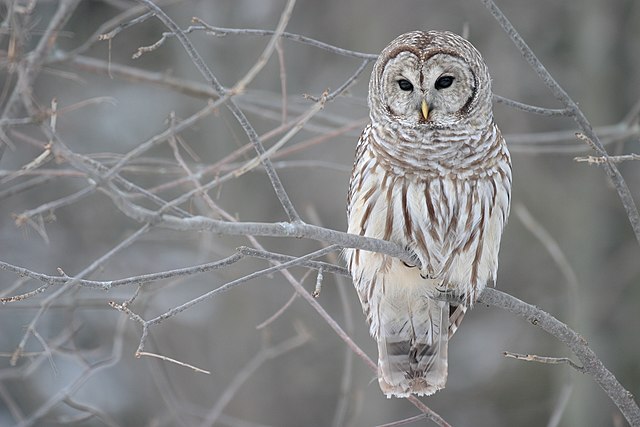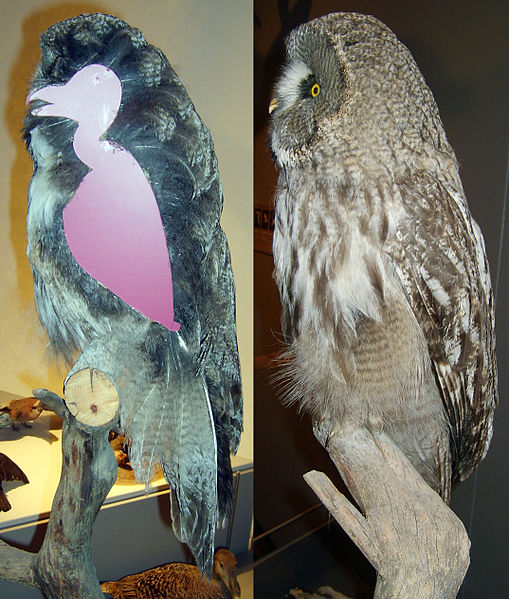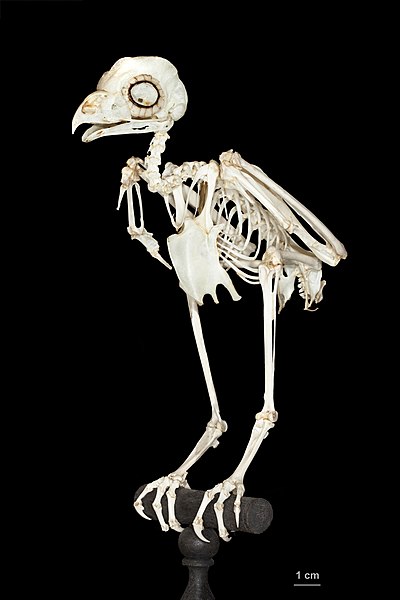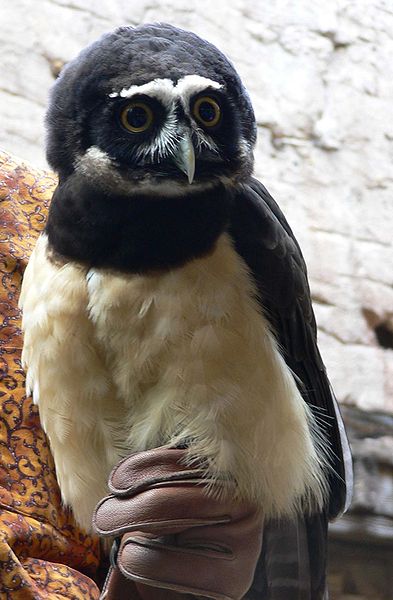The barred owl, also known as the northern barred owl, striped owl or, more informally, hoot owl or eight-hooter owl, is a North American large species of owl. A member of the true owl family, Strigidae, they belong to the genus Strix, which is also the origin of the family's name under Linnaean taxonomy. Barred owls are largely native to eastern North America, but have expanded their range to the west coast of North America where they are considered invasive. Mature forests are their preferred habitat, but they can also acclimatise to various gradients of open woodlands. Their diet consists mainly of small mammals, but this species is an opportunistic predator and is known to prey upon other small vertebrates such as birds, reptiles, and amphibians, as well as a variety of invertebrates.
Barred owl
Although previously considered a subspecies of barred owl, the fulvous owl is now considered a distinct species.
Some subspecies such as S. v. georgica from Florida differ from northern barred owls by their darker brown streaks and, more noticeably, their bare toes.
The Texas subspecies, S. v. heveola, has mostly bare and relatively sizable toes and distinctly cinnamon-hued plumage.
The true owls or typical owls are one of the two generally accepted families of owls, the other being the barn owls (Tytonidae). This large family comprises 230 living or recently extinct species in 24 genera. The typical owls have a cosmopolitan distribution and are found on every continent except Antarctica.
True owl
Cross sectioned great grey owl specimen showing the extent of the body plumage, Zoological Museum, Copenhagen
Skeleton of a true owl (Strigidae)
Spectacled owl (Pulsatrix perspicillata)








